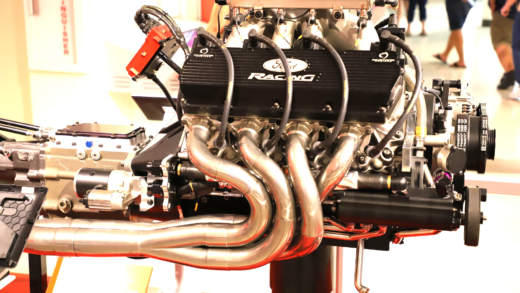Lithium-ion batteries are crucial for electric vehicles, providing energy storage and contributing to lower emissions. Their production has environmental impacts, but recycling processes help recover valuable materials. Innovations in battery technology are improving sustainability.
How Lithium-Ion Batteries Work in Vehicles
Lithium-ion batteries are essential components of electric vehicles (EVs), serving as the primary energy storage systems. These batteries operate through a simple yet effective mechanism: they store electrical energy through chemical reactions and release it when needed. In essence, when the vehicle is charged, lithium ions move from the positive electrode (cathode) to the negative electrode (anode), creating a flow of electrons that powers the vehicle.
During discharge, the process reverses. Lithium ions travel back to the cathode, releasing energy in the form of electricity. This energy can be harnessed to power the electric motor and other vehicle systems. The efficiency of this energy transfer is crucial for vehicle performance, allowing for longer ranges and quicker acceleration compared to traditional combustion engines.
In summary, lithium-ion batteries in vehicles function by enabling efficient energy storage and release through the movement of lithium ions, ensuring a reliable power source for electric mobility.
Materials Used in Automotive Lithium-Ion Batteries
The performance of lithium-ion batteries significantly depends on the materials used in their construction. The primary materials include lithium, cobalt, and graphite, each playing a vital role in battery efficiency and longevity.
- Lithium: This lightweight metal is crucial for energy density, allowing batteries to store more energy in a smaller size.
- Cobalt: Often used in cathodes, cobalt enhances battery stability and extends its lifespan, though its mining raises ethical and environmental concerns.
- Graphite: Commonly used as the anode material, graphite facilitates the efficient movement of lithium ions during charging and discharging cycles.
Other materials, such as nickel and manganese, are also utilized to improve performance. The choice of materials affects not only the efficiency but also the overall cost and environmental impact of lithium-ion batteries.
Environmental Impact of Lithium-Ion Battery Production
The production of lithium-ion batteries has notable environmental implications. The extraction of raw materials, such as lithium and cobalt, often involves significant ecological disruption. Mining operations can lead to habitat destruction, water pollution, and increased carbon emissions.
Moreover, the energy-intensive manufacturing process contributes to the carbon footprint of these batteries. Estimates suggest that the production of one lithium-ion battery can emit several tons of CO2, depending on the energy sources used. Transitioning to renewable energy for battery manufacturing is crucial to mitigate these environmental impacts.
In conclusion, while lithium-ion batteries are essential for the advancement of electric vehicles, their production poses environmental challenges that need to be addressed through sustainable practices and innovations.
End of Life Cycle for Lithium-Ion Batteries
When lithium-ion batteries reach the end of their life cycle, they undergo several potential fates. Disposal is often the first consideration, but it’s not as straightforward as tossing them in the trash. Improper disposal can lead to hazardous waste issues, as these batteries contain materials that may be toxic if released into the environment.
Recycling is a more sustainable option. Through recycling processes, valuable materials such as lithium, cobalt, and nickel can be extracted and reused in new batteries. This not only reduces waste but also lessens the demand for new raw materials. Here are key steps in the recycling process:
- Collection: Used batteries are collected from various sources, including recycling centers and retailers.
- Sorting: Batteries are sorted based on their chemistry to ensure proper recycling methods are applied.
- Processing: The batteries are then dismantled, and the valuable components are separated for reuse.
Ultimately, a robust recycling framework is essential for managing the end of life cycle for lithium-ion batteries, preventing pollution, and promoting sustainable practices.
Emissions from Lithium-Ion Batteries Compared to Fossil Fuels
Lithium-ion batteries contribute to a significant reduction in greenhouse gas emissions compared to fossil fuel vehicles. During their lifecycle, especially when charged using renewable energy, they produce fewer emissions. However, the production phase is where emissions can stack up. Manufacturing a lithium-ion battery can generate substantial CO2 emissions, often comparable to those from traditional vehicles over their lifespan.
Key points to consider:
- Production Emissions: The manufacturing process for lithium-ion batteries can emit several tons of CO2, depending on energy sources used.
- Operational Emissions: When in use, electric vehicles typically emit zero tailpipe emissions, unlike fossil fuel vehicles which continuously emit pollutants.
- Lifecycle Analysis: Studies show that over their entire lifecycle, EVs with lithium-ion batteries can produce significantly lower emissions than their gasoline or diesel counterparts.
In conclusion, while the production of lithium-ion batteries does involve emissions, their overall impact during use is much lower than that of fossil fuels, particularly when renewable energy is utilized in charging.
Renewable Energy Sources in Lithium-Ion Battery Production
Utilizing renewable energy sources in lithium-ion battery production is gaining traction as a way to reduce the carbon footprint of these essential components for electric vehicles. Manufacturers are increasingly looking towards solar, wind, and hydroelectric power to fuel their operations.
Here are some significant aspects of this trend:
- Solar Energy: Some battery manufacturing plants are incorporating solar panels to harness energy directly from the sun, reducing reliance on fossil fuels.
- Wind Energy: Wind turbines can provide a clean energy source for battery production facilities, further lowering emissions.
- Hydroelectric Power: Facilities near water sources can tap into hydroelectric power to sustain energy-intensive manufacturing processes.
By shifting to renewable energy, the battery production process not only becomes more sustainable but also enhances the overall environmental benefits of electric vehicles. This shift is crucial in the quest for greener transportation solutions.
Recycling Processes for Lithium-Ion Batteries
Recycling lithium-ion batteries is vital for recovering valuable materials and minimizing environmental impact. The recycling process involves several key steps:
- Collection: Used batteries are gathered from various sources, including consumers and businesses, to ensure proper recycling.
- Sorting: Batteries are sorted by chemistry to apply the correct recycling methods, enhancing recovery efficiency.
- Processing: The batteries are dismantled, and components like lithium, cobalt, and nickel are extracted and purified for reuse.
Innovative methods, such as hydrometallurgy and pyrometallurgy, are employed to recover materials effectively. These processes not only reduce waste but also decrease the need for new raw materials, significantly lowering the ecological footprint of battery production.
In addition, advancements in technology are improving the efficiency of recycling, with some facilities achieving recovery rates exceeding 90%. This progress is essential for promoting sustainability within the electric vehicle ecosystem.
Electric Vehicles and Greenhouse Gas Emissions
Electric vehicles (EVs) equipped with lithium-ion batteries play a crucial role in reducing greenhouse gas emissions. When powered by renewable energy, EVs offer a significant reduction in overall emissions compared to traditional fossil fuel vehicles.
Key points regarding emissions from EVs include:
- Zero Tailpipe Emissions: Unlike gasoline and diesel vehicles, EVs produce no tailpipe emissions, contributing to improved air quality.
- Lower Lifecycle Emissions: Studies indicate that even when considering manufacturing emissions, EVs often have a smaller carbon footprint over their lifespan than conventional cars.
- Renewable Energy Impact: Charging EVs with renewable energy sources further minimizes emissions, enhancing their environmental benefits.
Ultimately, the integration of lithium-ion batteries in EVs represents a significant step towards achieving sustainable transportation and addressing climate change challenges.
Common Misconceptions About Lithium-Ion Batteries
Several misconceptions surround lithium-ion batteries, often leading to misunderstanding their safety and environmental impact. Addressing these myths is crucial for public awareness and acceptance of electric vehicles.
- Myth 1: Lithium-ion batteries are unsafe and prone to explosions.
Fact: While any battery can fail under extreme conditions, modern lithium-ion batteries are designed with safety features to prevent overheating and short-circuits. - Myth 2: EV batteries have a short lifespan.
Fact: Most lithium-ion batteries can last 8-15 years, depending on usage and maintenance, making them a reliable option for long-term use. - Myth 3: The production of lithium-ion batteries is more harmful than fossil fuels.
Fact: Although there are environmental concerns, the lifecycle emissions of EVs are generally lower, especially when powered by renewable energy.
By debunking these misconceptions, consumers can make informed decisions regarding electric vehicles and understand the benefits of lithium-ion technology.
Innovations for Sustainable Lithium-Ion Batteries
Emerging technologies are paving the way for more sustainable lithium-ion batteries. Innovations focus on enhancing efficiency, reducing environmental impact, and increasing the availability of raw materials.
- Solid-State Batteries: These batteries use solid electrolytes instead of liquid ones, enhancing safety and energy density.
- Alternative Materials: Research into using abundant materials, such as sodium and aluminum, aims to decrease reliance on scarce resources like cobalt.
- Improved Recycling Techniques: Advances in recycling technologies are increasing recovery rates and reducing the environmental footprint of battery production.
These innovations not only address current challenges but also set the stage for a more sustainable future in energy storage and electric mobility.





Comments are closed.